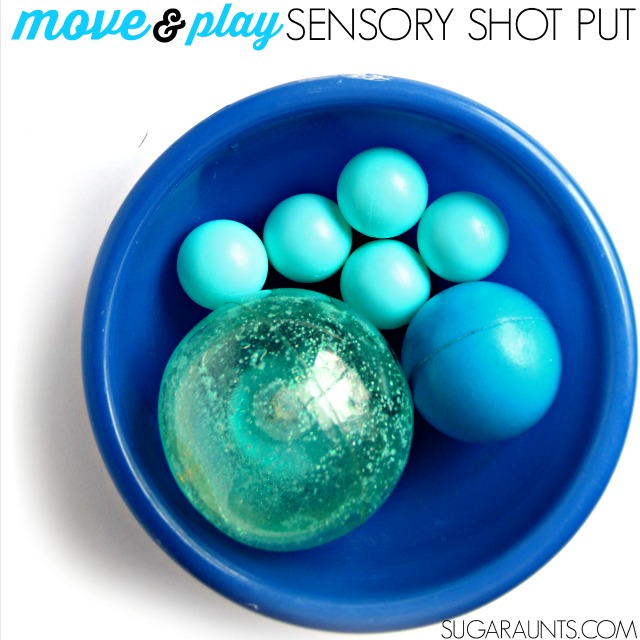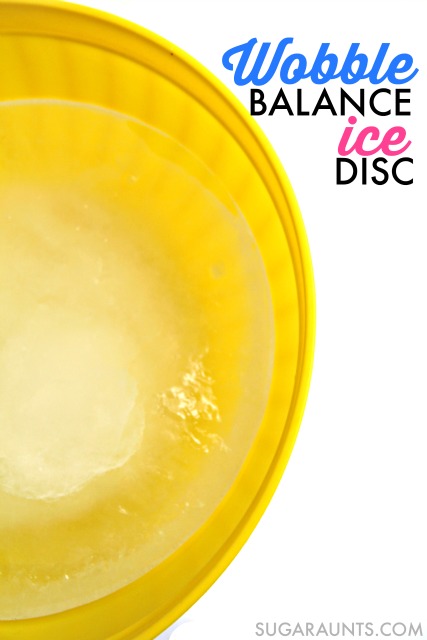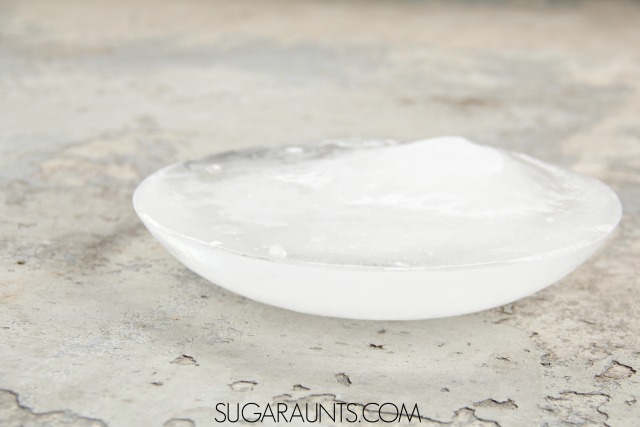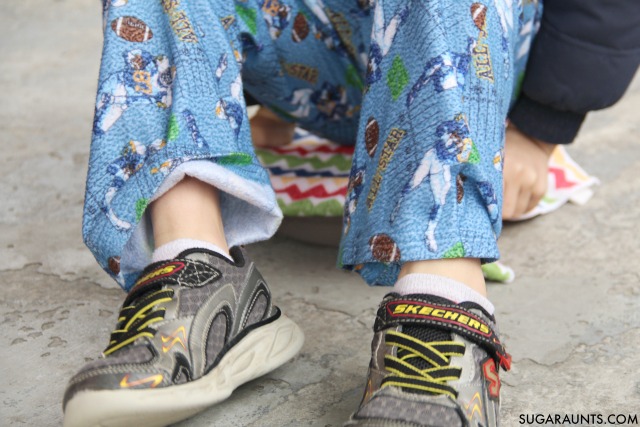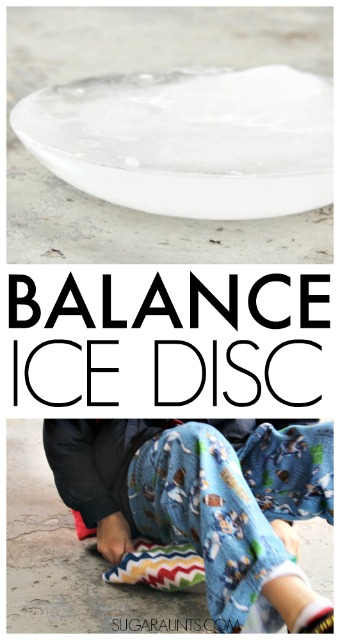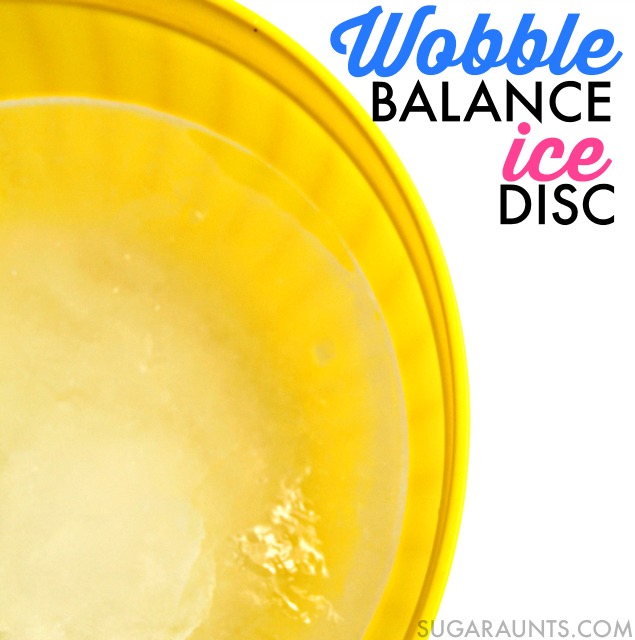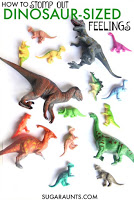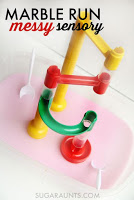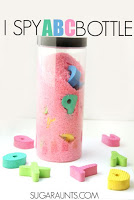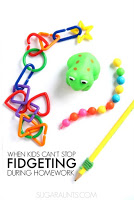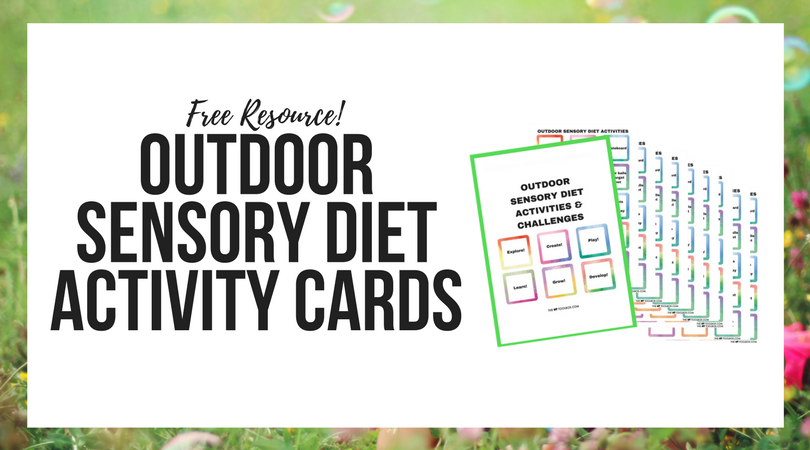Today we have a fun snowball game indoor activity. This throwing activity offers vestibular input and is a fun shot put activity for kids, too. You’ll also love our other indoor snowball fight activity.
I’ve got four kids. The weather is starting to get really cold and the illnesses are being passed from kid to kid. We’ve got runny noses, ear infections, and antibiotic prescriptions for half of the crew. This mama needs creative indoor play.
Shot Put Activity
When the indoor play requires a sensory spin, this move and play activity is designed to provide vestibular input for sensory movement seekers and is sure to bring on the smiles. Even through the sniffles!
We’ve been sharing a few creative ways to play with vestibular input recently. These have been wintry activities based on our Christmas OT calendar (and I’ve got a few more fun ideas up my OT sleeves for you!).
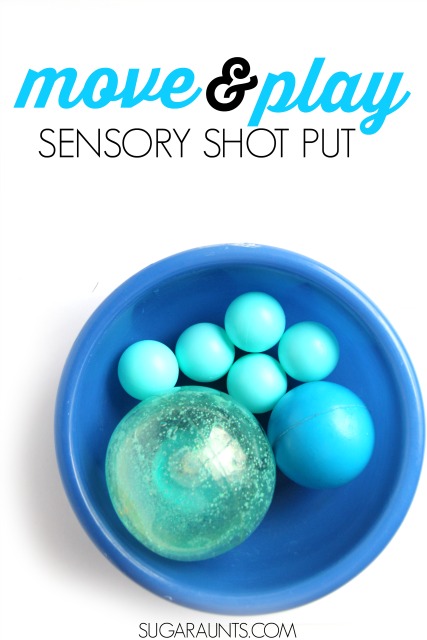
Vestibular Ball Throwing Activity
Full disclosure: This post contains affiliate links.
While this sensory shot put activity is definitely a great vestibular input activity, it can be done any time through out the year. I went with light blue (Frozen-esque?) balls that reminded us of winter snowballs. The small balls were from our Bounce-Off Game
game.
You can use whatever lightweight ball you’ve got in the house. A ping pong ball or small plastic ball like these ball pit balls
would work great. This would be a great activity to incorporate into other ball pit activities, too.
You don’t want to use a bouncy, rubbery ball, because for this activity, we want the concentration to be on the target and not a ball that is bouncing all over your living room and crashing into lamps.
Indoor Shot Put Game
Use a light foam ball or ping pong ball to play shot put. Create a target using an empty laundry basket. Your child should turn in circles like a shot put champ, extend their arm out, and toss that snowball into the target. Encourage them to spin in one area to get rotational vestibular input.
Rotational vestibular input can be done by simply spinning on the feet, but adding a wheeled office seat or Scooter Board
can be beneficial too. Adding the scooter board allows this activity to be done in different positions.
Rotational Vestibular Input Activity
It is important to note that rotational vestibular input (spinning) is a powerful physical action on the body.
Activities should last no more than 15 minutes. Spinning needs to be monitored, particularly in children with sensory needs. Some children may react quickly to a spinning activity and others may take longer for their body to register the effects of rotational input. For kids that just do not get dizzy, provide only limited periods of spinning input and only in one direction for 10-15 spins, then in the other direction. The effects of spinning can last for a full 8 hours, so it’s important to not overdo this activity. Please contact your child’s Occupational Therapist for recommendations to meet your child’s particular needs.
Have snow outside? Great! Take this activity outdoors and play snowball shot put with real snowballs!
More ways to extend this activity:
-
Practice counting spins and balls that are tossed.
-
Use target areas in various sizes.
-
Try the activity in various positions: seated, prone, and standing.
-
Add soft wrist weights
for proprioceptive input.
-
Work on hand-eye control by removing the movement component.
-
Add learning by spelling out words with each throw.
